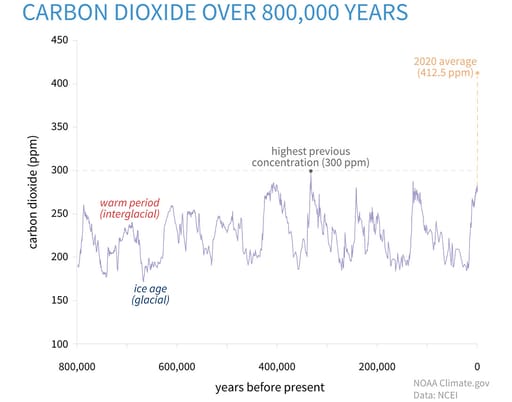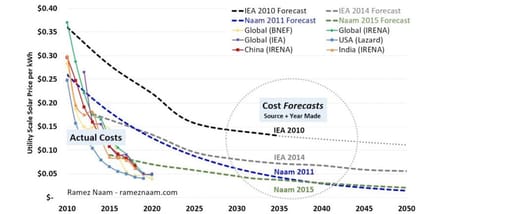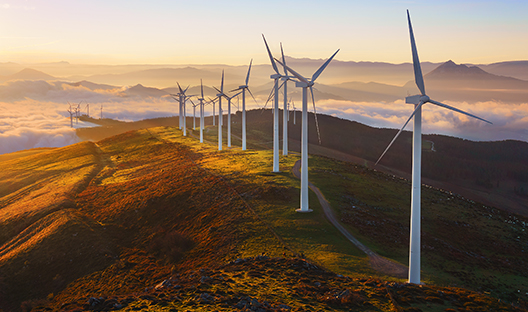Get Focus insights straight to your inbox
“Many of us ask what can I, as one person, do, but history shows us that everything good and bad starts because somebody does something or does not do something.” Sylvia Earle – Marine biologist, oceanographer/explorer.
Willful blindness is a term used in law to describe a situation in which a person seeks to avoid civil or criminal liability for a wrongful act by intentionally keeping themselves unaware of facts that would render them liable or implicated.
For many years that was my approach to climate change. It was far easier to ignore any information which seemed overly complicated or to find one controversial article that created doubt about the relationship between global warming and carbon dioxide (CO2) emissions than it was to understand climate science or learn about the ways that I could make a difference.
I am just one of 8 billion people on this planet after all. Surely if it was so important, everyone would take it more seriously?
As I’ve grown older, I’ve realised that often people’s views or interests are so deeply entrenched that they simply won’t consider that they may be wrong. It doesn’t suit their positioning or their conscience to accept that for many decades they have been contributing to an increasingly unstable climate and less hospitable planet. This is a hard truth to accept and all the more reason for many to stay blind to the evidence which is rapidly shifting from ‘balance of probability’ to ‘beyond reasonable doubt’.
So you now have two choices, you can remain willfully blind or… you can keep reading and hopefully my introduction to climate change (or climate change for dummies) below will arouse your conscience and encourage you to learn more and start making a positive change, however small. Billions of people each doing one small thing create an unstoppable wave.
I am just one of 8 billion people on this planet after all. Surely if it was so important, everyone would take it more seriously?
So let’s begin at the beginning. What is climate change? Very simply, climate change is a long-term, persistent change in atmospheric conditions. While weather relates to changes in atmospheric conditions in the short term, the climate is more about how regional weather patterns change over decades. Climatic change is largely driven by a set of greenhouse gases (GHGs) that accumulate in the atmosphere, of which CO2 is the most common. These GHGs contribute to the greenhouse effect and act as an insulator on the planet, raising the average temperature in the atmosphere, on land and in water.
The earth receives energy from the sun and the GHGs prevent this energy from being radiated back into space. While CO2 is the most well-known GHG, there are many others, some of which are more potent than others. Methane, for example, is 28 to 36 times more potent than CO2, although it dissipates over a much shorter period than CO2.
As humans, we are releasing large amounts of GHGs into the atmosphere through the burning of fossil fuels, changes to land use (deforestation) and agriculture (methane emissions from livestock).
Our current CO2 levels are the highest in 4 million years, at which point the earth was between two and four degrees warmer and sea levels were 10-25 metres higher.
Atmospheric concentrations for the past 800,000 years

Source: NOAA Climate.gov (Data: NCEI), 08/07/2021
https://www.climate.gov/media/12987
The carbon cycle describes the process in which carbon atoms continually travel from the atmosphere to the Earth and then back into the atmosphere. Since our planet and its atmosphere form a closed environment, the amount of carbon in this system does not change. Where the carbon is located — in the atmosphere or on Earth — is constantly in flux. Changes to the quantity of fossil fuels we burn or the amount of deforestation that occurs will change the net amount in the atmosphere.
Over the past 70 years, the amount of CO2 (measured in ppm or parts per million) has increased from 286ppm to 410 ppm. This increase has led to a 1˚ C degree temperature increase.
The main sources have been:
99ppm
98ppm
75ppm
33ppm
The main ‘sinks’ (absorbers) are:
-99ppm
-76ppm
The land use ‘source’ is a direct result of deforestation ie fewer trees to absorb CO2. While the ocean is an important ocean sink, this does come at a cost. When the ocean has to absorb excess amounts of CO2 it leads to ocean acidification. When CO2 is absorbed into the ocean it creates carbonic acid. This has a dire effect on coral. The acidification reduces carbonate ions that corals need to construct their skeletons.
There is an observed linear relationship between cumulative total anthropogenic (man-made) emissions and a temperature increase. You may then ask why does it matter if the temperature rises another 2˚?
This brings us to ‘net zero’. I’m sure we have all heard about it but what does a net-zero commitment mean? To halt global warming at any level – be it at 1.5°C, 2°C or 3°C – global CO2 emissions must be reduced to a net-zero level. Reaching net-zero emissions means that for each tonne of CO2 still emitted, human activities must remove a ton from elsewhere in the atmosphere, so that on balance no CO2 is added to the atmosphere.
Thus far, the cumulative total anthropogenic emissions amount to 500 Gt. We are currently emitting 42 billion tons of CO2 annually. For us to stay below 1.5˚ of warming with a probability of 66%, we are required to limit our future emissions to 420 billion tons ie 10 years at the current pace, and then be at net zero. We can’t just stop in 10 years, so the plan is to adopt a gradual approach and roughly halve emissions by 2030 and achieve net-zero by 2050.
We are currently emitting 42 billion tons of CO2 annually.
Countries and companies are increasingly being encouraged to set realistic net-zero 2050 goals. The Paris Agreement requires that countries submit their nationally determined contributions (NDCs) and report back on them every five years. South Africa has committed to net-zero by 2050. This commitment is not compatible with building new coal capacity, as currently envisioned by the Integrated Resource Plan and would require substantial investment in renewable capacity.
On the corporate side, we are witnessing many companies committing to net zero. While this is more prevalent amongst global multinationals, we expect smaller, more nimble companies to embrace renewable energy faster. This is a no-brainer in South Africa – you can reduce your reliance on Eskom, ensure more consistent productivity and production, it’s cheaper and you can significantly reduce your carbon footprint.
The longer there is inaction, then the faster, the more dramatic and disruptive the inevitable policy response will be.
The scariest part of climate change is the possibility of tipping points. We are in unchartered territory. Climate change impacts rarely unfold linearly. Once a tipping point is crossed, it can accelerate climate impacts and trigger irreversible changes. An example of this would be the melting of the ice sheets and rapid sea level rises, resulting in flooding of coastal cities or the abrupt thawing in the permafrost in the Arctic, which in turn would result in huge amounts of carbon/methane being released and accelerating global warming.
Significant advances have been made in renewables, both in their effectiveness and their economic competitiveness. I do not doubt that with everyone pulling in the same direction, technologies such as green hydrogen and carbon capture will achieve economies of scale and improve our response and outcome. The uptake of solar and its scale/cost benefits are a great example.
Projected versus observed costs of utility-scale solar PV electricity in 2015, showing that observed cost reductions of PV electricity are ahead of projections by at least a decade

Source: Ramez Naam, Solar’s Future is Insanely Cheap, 14/05/2020
https://rameznaam.com/2020/05/14/solars-future-is-insanely-cheap-2020/
So don’t despair. While it is easier to ignore this or any other piece of climate change-related news or information, you can start by making small incremental changes today that will not only ease your conscience but also give you a sense of pride for making a real difference for future generations.
The problem can be tackled in a multitude of ways, but some of the easiest fixes save you money in the long term. In order of cost-benefit, you can:
- Reduce your consumption of (fossil fuel-powered) electricity. Don’t leave lights on etc
- Switch from incandescent to LED
- Insulate your properties
- Choose more efficient electrical appliances
- Plant trees
- Recycle your waste
- Eat less red meat (methane emitted from agriculture/livestock is more damaging than all of transport)
- Switch to a hybrid vehicle (or electric if you have sufficient home solar capacity)
- Switch to solar
Furthermore, as an investor, you can make a difference by aligning your investments. Is your portfolio manager engaging with underlying companies to ensure they make the transition and aren’t left behind/stranded? Companies that have embraced the transition are more highly valued than those that haven’t.
In short, ensure you are part of the solution and not part of the problem.

Responsible Investing and Sustainability at Investec Wealth & Investment
As Sustainability is core to our fundamental investment approach, we have integrated ESG considerations into our investment decision making and broader investment process.




